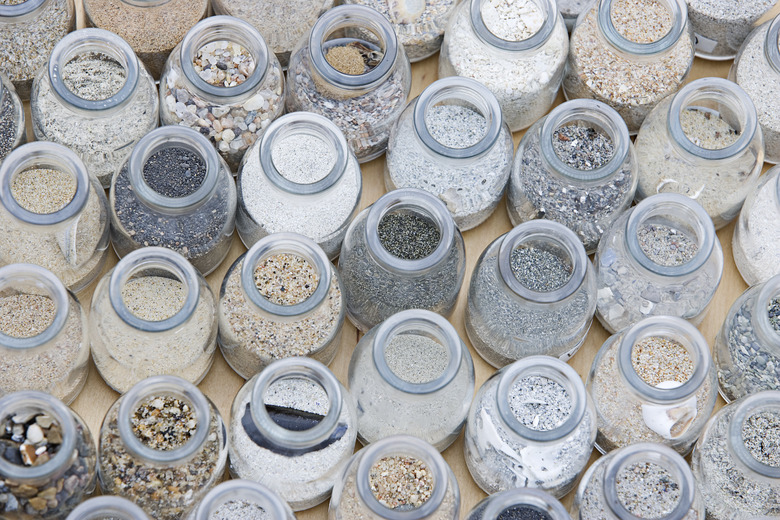How To Calculate Voidage
Voidage is the proportion of unoccupied volume (that is, gaps or empty spaces) in a volume of some material. The term voidage is normally used to refer to the tiny spaces between particles in a powder or granulated material like sand. The actual calculation of voidage is simple: it is the amount of empty space divided by the total volume. In cases like the experiment described here it is also easy to measure voidage. In others, precise determination of voidage requires the use of measuring lasers, complex computer models and other sophisticated technology.
Step 1
Determine the volume of a container that can hold water. Measure the length, width and height in centimeters. Multiply length by width by height to find the volume in cubic centimeters.
Step 2
Fill the container with dry sand. Level the sand so that it just fills the container.
Step 3
Fill a measuring cup calibrated in milliliters (also called cubic centimeters) with water and write down the amount of water you start with.
Step 4
Add water to the container of sand slowly. Tap the container several times to dislodge any air trapped in the sand. Continue adding water until the sand is saturated and any more water will spill out, rather than being absorbed by the sand.
Step 5
Note down the amount of water added. Once the sand is saturated, the water has filled any empty spaces. Divide the volume of the container into the volume of water added. For example, if the container has a volume of 2 liters (2000 milliliters) and you added 500 milliliters of water, you have 500/2000 = 0.25. The voidage is therefore 0.25.
Step 6
Express the voidage as a percentage by multiplying by 100. With a voidage of 0.25 this is 0.25 x 100 = 25 percent. This means that when the sand was dry at the start, the "full container" contained only 75 percent sand by volume. The other 25 percent was unoccupied space: the voidage.
Things Needed
- Waterproof container
- Dry sand
- Measuring cup
- Water
- Measuring tape
- Calculator
TL;DR (Too Long; Didn't Read)
If you use a cylindrical container such as an empty coffee can, you can find the volume as follows: measure the distance around the container (circumference) with a tape measure. Divide the circumference by 2 x pi (pi equals about 3.1416) to find the radius (R). The cross-sectional area of the cylinder is 2 x pi x R squared. Multiply the cross-sectional area by the height to calculate the volume of the cylinder.
Cite This Article
MLA
Adkins, William. "How To Calculate Voidage" sciencing.com, https://www.sciencing.com/calculate-voidage-6136680/. 29 March 2010.
APA
Adkins, William. (2010, March 29). How To Calculate Voidage. sciencing.com. Retrieved from https://www.sciencing.com/calculate-voidage-6136680/
Chicago
Adkins, William. How To Calculate Voidage last modified August 30, 2022. https://www.sciencing.com/calculate-voidage-6136680/
